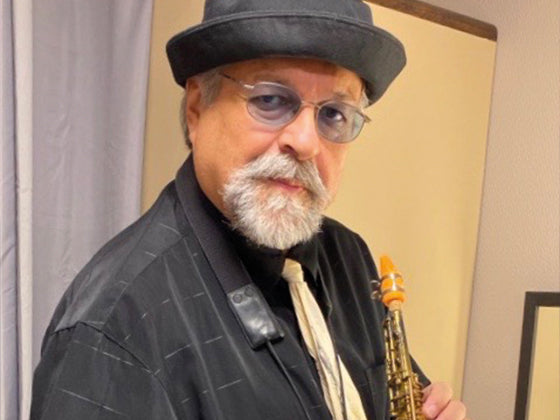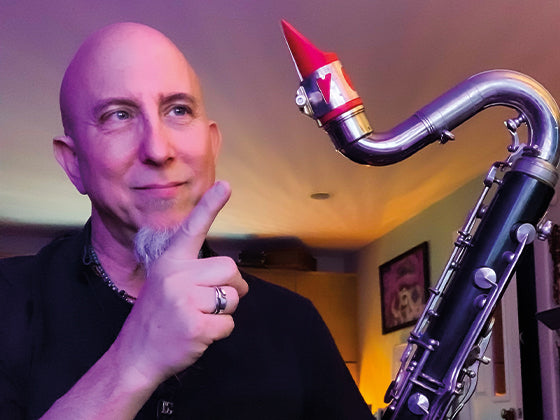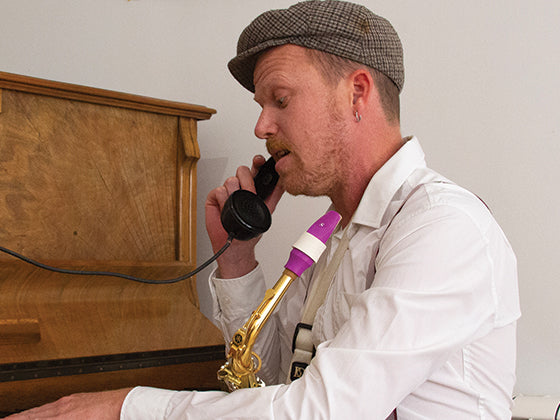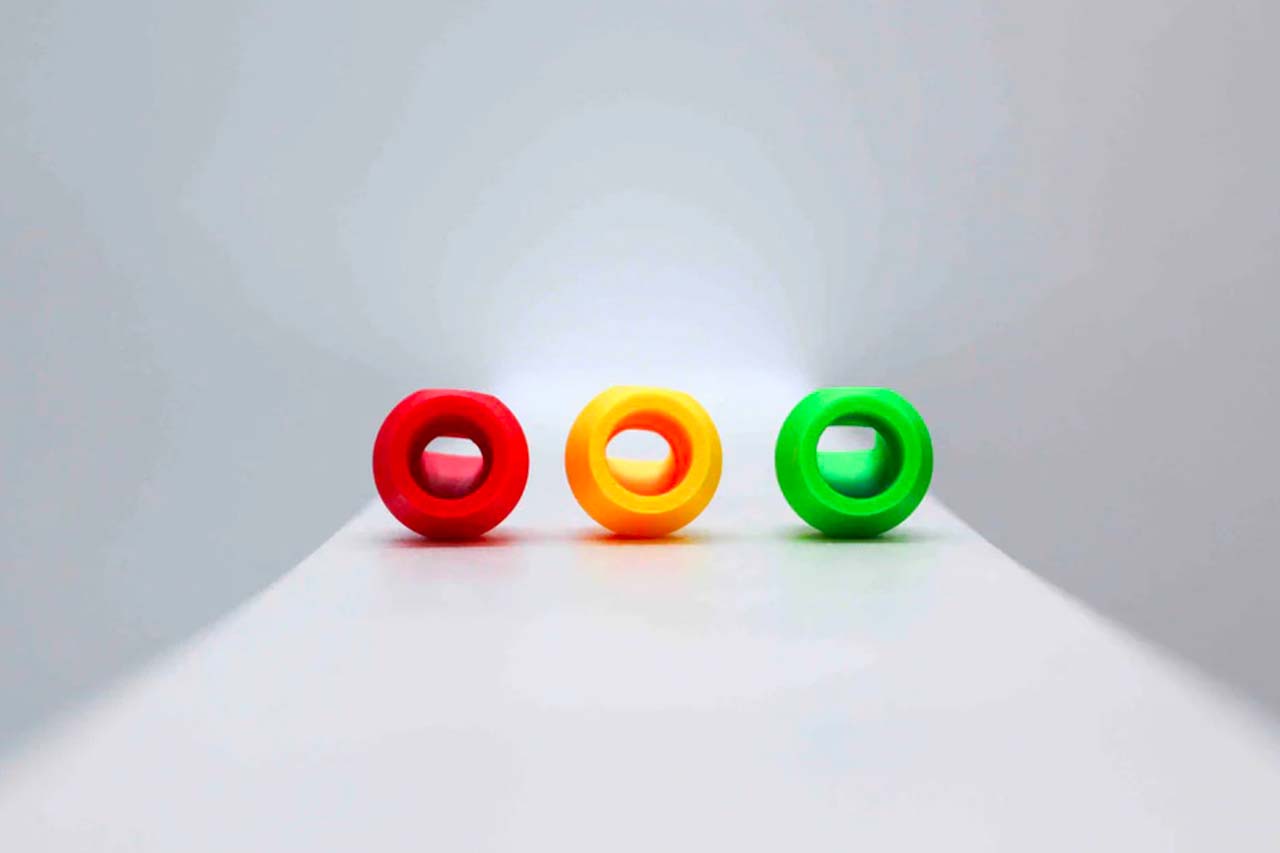The chamber is the part of the mouthpiece located on the inside of the bore, right at the entrance of the cylindrical part which is placed onto the cork of the saxophone. It’s a geometrical parameter which strongly influences the timbre: its size determines the effective surface through which the air flow, generated by the musician, enters the instrument.

Influence on the sound
The diameter of the chamber influences several parameters. One of the most noticeable is the brightness of the timbre. Keeping all other parameters equal, an increase in the diameter of the chamber will result in an amplification of the low frequencies of the spectrum, and therefore produce a darker sound. Whereas, decreasing the diameter of the chamber will increase the brightness. However, large chambers require a greater effort from your lungs.


When it comes to acoustics, the chamber plays the role of a filter: a very large chamber is equivalent to a low-pass filter, amplifying the low frequencies to the detriment of the highs. On the contrary, a very small chamber will act as a high-pass filter and cut out the low frequencies, favoring the treble instead. However, the chamber also plays a role in the ease of emission of the mouthpiece, on its homogeneity, and on the width of the sound.
What chamber should you choose for your mouthpiece?
I have often met saxophonists with very precise requests, such as: “I only play with very large chambers”. Some mouthpiece brands choose one chamber size and build all of their mouthpieces based on this size. Other brands like Vandoren offer different chamber sizes.
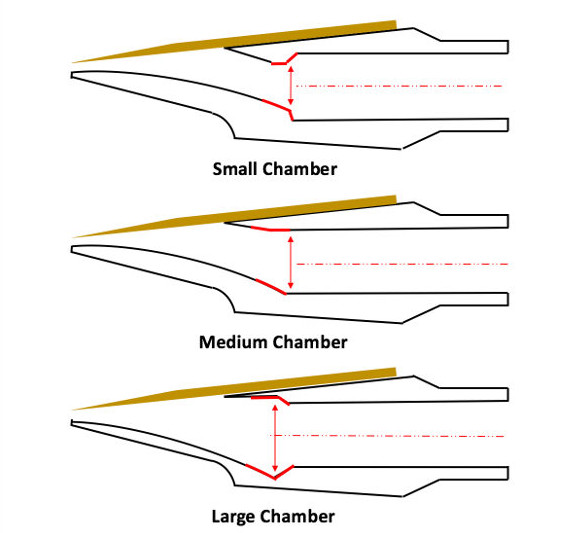
The experimental sessions we conducted demonstrated that the impact of the chamber size on the sound is not that simple. The idea that "large chamber = dark and warm mouthpiece" is difficult to support because it greatly depends on the other parameters of the mouthpiece, in particular the baffle. (To add to your reading list: The importance of the baffle). What's more, some geometric combinations produce instabilities, which means that for some baffle shapes, a small chamber would not work at all, just as large chambers don't suit all styles of baffle. Therefore, don't be to difficult about your baffle preconceptions. A small chamber coupled with a very low baffle could be the perfect combination for that dark and warm mouthpiece you’re looking for.

A good parameter to adjust the mouthpiece design
When determining the geometry of a mouthpiece (or "SoundShaping", see also our article Syos crafts: Sound Shaper), we mainly use the chamber as an adjustable variable, whose size will depend very much on the chosen baffle. So when conceiving a sound request, I will ask myself a series of questions in this order:
- Which mouthpiece baffle is most appropriate?
- With the chosen baffle, what chamber should I design to achieve the desired brightness value?
- Will the mouthpiece be too strong or centered with said chamber?
- If so, could I choose another baffle which would work with a different chamber size?
- etc…
It's the same story with the tip opening: changing the opening of the mouthpiece will play on several sound parameters, therefore some changes will be coupled with chamber modifications. For example, when moving from a very small chamber to a very large chamber, it is good to decrease the opening so that the mouthpiece does not become too hard to play.
My advice if you have to choose a mouthpiece: do not focus solely on the chamber, try to forget your preconceived ideas. The most important element will always be the baffle. If you want to find out a little bit about the other parameters, please check out our other articles:
The importance of the baffle? The saxophone mouthpiece tip opening
Summary:
-
The chamber plays a role of a low or high-pass filter: a large chamber will amplify the low frequencies (for a darker sound).
-
The chamber alone won’t be enough to determine a mouthpiece's characteristics: the baffle plays the primary role, the chamber role is secondary. However, for a similar baffle, an increase or decrease in chamber size will modify the timbre brightness.
A little tip to understand Syos artists' mouthpieces!
On the Syos website, you can see the chamber size for each signature mouthpiece on the Syos artists' pages:
- Soprano saxophone signature mouthpieces
- Alto saxophone signature mouthpieces
- Tenor saxophone signature mouthpieces
- Baritone saxophone signature mouthpieces.
For a custom saxophone mouthpiece, you can choose the opening. We ask you which saxophone mouthpiece you are currently using to know which opening you're comfortable with, and decide according to your request if it's a good idea to keep the same or go for one more or less open.






